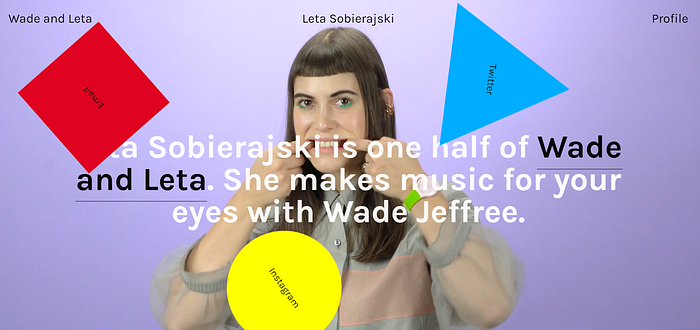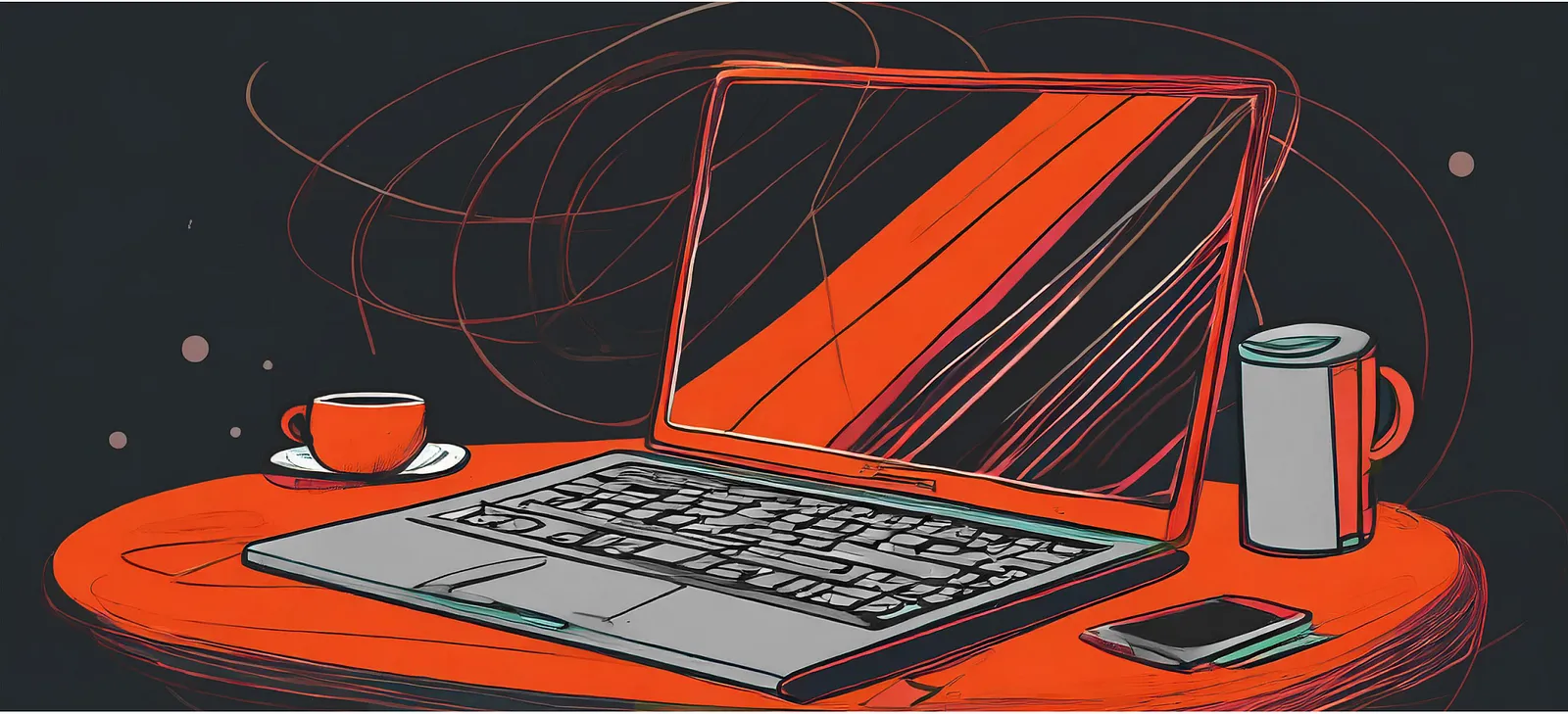A graphic design job is an excellent combination of the creativity that artistic professions offer and the perks of a stable career.
However, competition in the design field is always increasing, and the current economic situation is far from perfect. So, how can you stand out from the crowd and get your (first) graphic design job?
At Muzli, we have been working with designers in different fields for almost a decade and know a few industry secrets that we’re ready to share with you today to help you get your foot in the door and land your dream job.
Here’s what we’ll cover in this article:
-
- What is the demand for graphic designers today?
- What salaries graphic designers are earning?
- Different types of design jobs: Graphic vs Web / UX / UI
- How do you get experience as a graphic designer?
- What’s better: work for an agency or work as a freelancer?
- How to create a great design portfolio to get hired?
- Designer job ads: Where do you look for job offers?
 Impressive portfolio by Yeshi designs
Impressive portfolio by Yeshi designs
What is the demand of graphic designers today?
While traditional designers from the era of print are in decline, the demand for digital-oriented designers is stronger than ever. For example, the US Bureau of Labor Statistics projects that by 2031, graphic design job openings will reach 271,800.
Since the digital world is expanding at a crazy pace, talented graphic designers are in high demand.
Additionally, emerging niches such as virtual reality and spatial computing, which heavily focus on visuals, will also see an increased need for new era of designers. Other fields of design, such as UI and UX design, are also experiencing significant growth.
Salaries of graphic designers
While salaries depend on many factors, such as geographical location and seniority, here are the general ranges of how much you can expect to make as a graphic designer.

Glassdoor reports that in the US, the average graphic designer salary ranges from USD 57K to USD 96K per year. In Europe, the situation is a bit different. For example, in Germany, the average annual salary for a designer is EUR 37K to EUR 54K.
Of course, you have to keep in mind that entry-level designer salaries can be drastically different from those of senior-level designers or more managerial roles, such as design directors or creative directors.
Reasons why graphic design is a good career
While things like salary and economic situation are always important, don’t forget that working as a designer has a lot of other benefits too:
-
- It exercises your creativity
- Rarely gets boring
- You’re constantly learning
- Has many paths for career growth
Also, your work gets seen by thousands of even millions of people. For example, on platforms like Muzli.

Different types of design jobs: Graphic Design vs Web / UX / UI Design
The perception of the designer profession is continually evolving. 20 years ago, design was primarily associated with print media. Today, the scope has expanded to include such exotic roles as metaverse designers. However, digital designers today mainly focuses on graphic design or UX/UI design.
Graphic design focuses on visual communication through the use of typography, imagery, color, and layout to create visually appealing and effective designs. This field covers branding, advertising, web design, and packaging.
UX (User Experience) design and UI (User Interface) design, on the other hand, concentrate on creating intuitive and engaging digital interfaces. It involves user research, wireframing, prototyping, and usability testing.
 Web design project by Peter Tarka
Web design project by Peter Tarka
How to get a graphic design job with no experience?
If you chose a career of graphic designer and are just starting out, you’ve probably encountered this age-old dilemma that has already turned into a meme:
To find a job you need experience, and to get experience you need a job.
But how to get real work experience as a graphic designer? If you are just taking your first steps, there are a few tips on how to improve your design skills and get seen by potential clients:
1. Volunteer to do free design work
Consider non-profit organizations, NGOs, schools, and other initiatives that could use some help. Maybe your local animal shelter needs help with branding, or a scout organization has a terribly outdated website.
Many organizations could benefit from higher-quality designs but usually have a very limited budget for it. If you present a solid offer to provide your time in exchange for the opportunity to learn and showcase your work, it becomes very hard for them to say no.
2. Pursue you own personal design projects
Do you have a hobby that you want to promote and that needs some design material? Why not use this opportunity to train and showcase your skills?
The best part is that there will be no strict deadlines or stakeholders, so you can work at your own pace. This approach works best if you have another full-time job and limited time to invest in growing as a designer.
3. Enroll into graphic design courses and get certifications
Certifications can also be a way to demonstrate a designer’s proficiency in specific tools and techniques, making them more competitive in the job market. For employers, certified designers are often seen as more reliable and knowledgeable, which can be crucial in securing clients and projects.
4. Find an internship at a design agency
Once you have the basic skills in place, you can try them out in the real world by working as an intern at a design agency or in a marketing department.
PRO TIP: Even if the agency you want to work at doesn’t have an active job advertisement that fits you, don’t be discouraged. Feel free to contact them and introduce yourself anyway. Many forward-thinking agencies are always on the lookout for rising talent, so it’s always beneficial to get your foot in the door and get noticed.
5. Do small design projects through online platforms
Make the best out of the gig economy and try out online platforms to find design work. While at first the payment might not be something to write home about, it’s a good way to find your first gigs for real clients. Examples like these stands out in your portfolio, because it shows your experience in a ‘real world’.
A few platforms for designers to find work:
6. Always showcase your design work online
There are many online sites where you can showcase your work, not just save your sketches on your hard drive. Sharing your work with the world can provide valuable feedback, help you find clients, or simply notify your network that you’re focusing on design work, ensuring you’re on their radar when opportunities arise.
You can use social media networks like Instagram or Pinterest, or platforms like Muzli, to submit your design work for exposure.
What’s better: working for an agency vs. working as a freelancer?
That’s another age-old dilemma, where it’s very hard to give a clear answer. But we can overview the pros and cons of these choices.
Benefits of working as a freelance graphic designer
-
- Flexible time schedule and location
- More autonomy
- Diverse clients
- Higher potential salary
Benefits of working as a graphic designer in-house
-
- Stable income
- Collaborative environment
- Access to resources (software, knowledge)
- Clear career development path
Designer job ads: Where do you look for job offers?
If after looking at these benefits you choose to work as an in-house graphic designer, check out these specific designer job ads:
-
- Linkedin Designer Jobs
- Design Job Board at Muzli
- Dribbble
- Behance
- Get all jobs from LinkedIn with LinkedIn Jobs Scraper
How to create a great design portfolio to get hired?
As we mentioned before, probably the most important career tool of a great designer is their portfolio. We have handpicked a collection of portfolios from the world’s top designers that will help you get inspired and land your dream job as a designer.
 Minh Pham — Multidisciplinary Designer
Minh Pham — Multidisciplinary Designer
 Danilo De Marco — Visual and Type Designer Desginer
Danilo De Marco — Visual and Type Designer Desginer
 Flayks — Art Director & Digital Designer
Flayks — Art Director & Digital Designer
 Emanuele Papale | Digital Art Director & Designer
Emanuele Papale | Digital Art Director & Designer
 Justine Soulié — Motion Designer & Illustrator based in Paris
Justine Soulié — Motion Designer & Illustrator based in Paris
Interested in exploring a more extensive list of inspiring portfolio websites? Check out the following article.
















